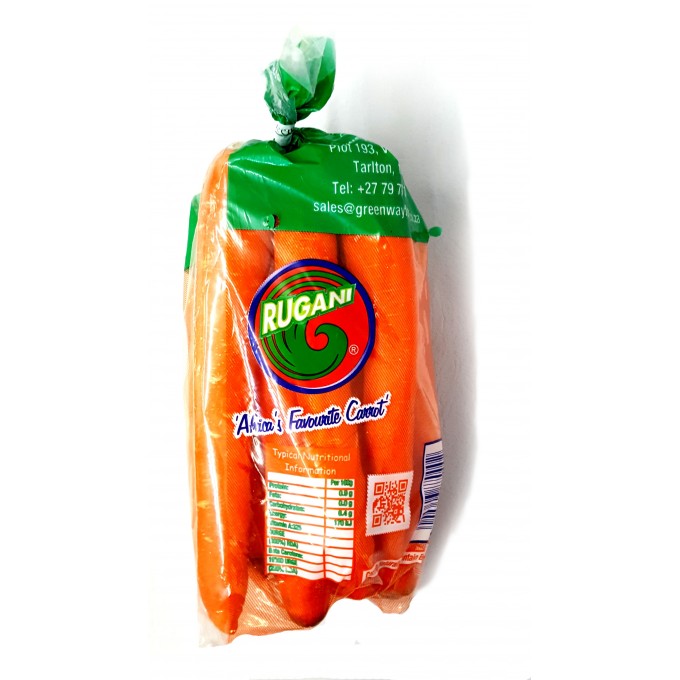

Dear Evergreens online customer, if you want your order to be delivered to you would you please be so kind as to phone our friendly online team for the delivery cost as our online website is currently under maintenance and your delivery cost has not been calculated automatically. We apologize for any inconvenience.
PLEASE TAKE NOTE: We only deliver in Pretoria. Please see our shipping policy here.


Carrots can be eaten in a variety of ways. Only 3% of the β-carotene in raw carrots is released during digestion: this can be improved to 39% by pulping, cooking and adding cooking oil. Alternatively they may be chopped and boiled, fried or steamed, and cooked in soups and stews, as well as baby and pet foods.
A well known dish is carrots julienne. Grated carrots are used in carrot cakes, as well as carrot puddings, an old English dish thought to have originated in the early 19th century. The greens are edible as a leaf vegetable, but are rarely eaten by humans. Together with onion and celery, carrots are one of the primary vegetables used in a mirepoix to make various broths.
In India carrots are used in a variety of ways, as salads or as vegetables added to spicy rice or daal dishes. The most popular variation in north India is the Gaajar Kaa Halwaa carrot dessert, which has carrots grated and cooked in milk until the whole mixture is solid, after which nuts and butter are added. Carrot salads are usually made with grated carrots in western parts with a seasoning of mustard seeds and green chillies popped in hot oil, while adding carrots to rice usually is in julienne shape.
The variety of carrot found in north India is rare everywhere except in Central Asia and other contiguous regions, and is now growing in popularity in larger cosmopolitan cities in South India. The north Indian carrot is pink-red comparable to plum or raspberry or deep red apple in colour (without a touch of yellow or blue) while most other carrot varieties in world are from orange to yellow in colour, comparable to hallowe'en pumpkins.
Ever since the late 1980s, baby carrots or mini-carrots (carrots that have been peeled and cut into uniform cylinders) have been a popular ready-to-eat snack food available in many supermarkets.
Carrot juice is also widely marketed, especially as a health drink, either stand-alone or blended with fruits and other vegetables.
| Nutritional value per 100 g (3.5 oz) | |
|---|---|
| Energy | 173 kJ (41 kcal) |
| Carbohydrates | 9 g |
| - Sugars | 5 g |
| - Dietary fibre | 3 g |
| Fat | 0.2 g |
| Protein | 1 g |
| Vitamin A equiv. | 835 μg (104%) |
| - beta-carotene | 8285 μg (77%) |
| - lutein and zeaxanthin | 256 μg |
| Thiamine (vit. B1) | 0.04 mg (3%) |
| Riboflavin (vit. B2) | 0.05 mg (4%) |
| Niacin (vit. B3) | 1.2 mg (8%) |
| Vitamin B6 | 0.1 mg (8%) |
| Folate (vit. B9) | 19 μg (5%) |
| Vitamin C | 7 mg (8%) |
| Calcium | 33 mg (3%) |
| Iron | 0.66 mg (5%) |
| Magnesium | 18 mg (5%) |
| Phosphorus | 35 mg (5%) |
| Potassium | 240 mg (5%) |
| Sodium | 2.4 mg (0%) |

